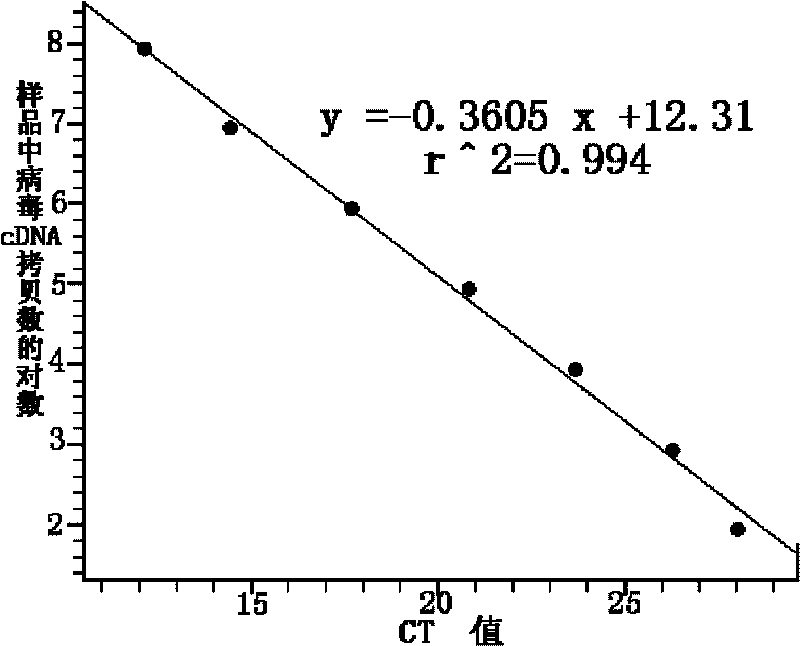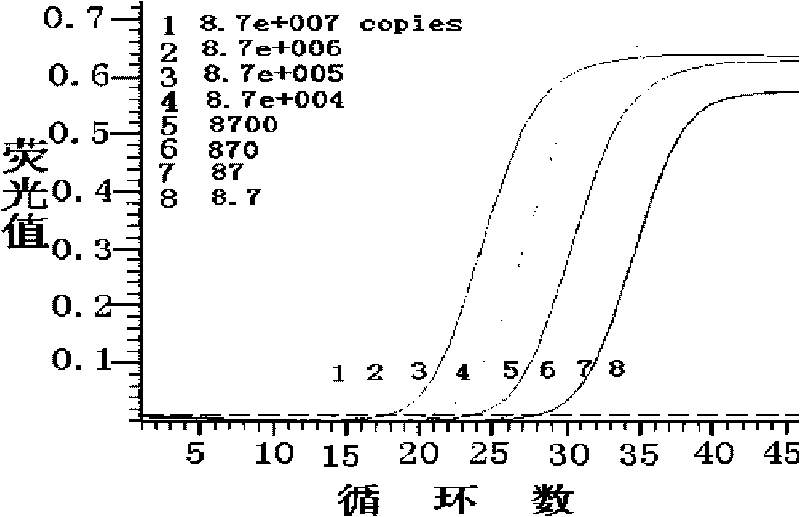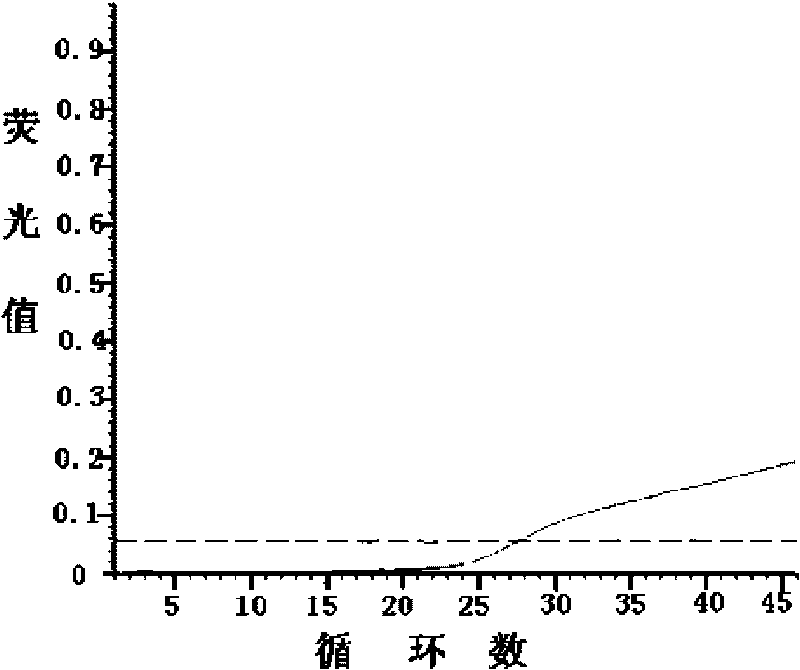Fluorescent quantization PCR detection method for swine astrovirus
An astrovirus and fluorescence quantitative technology, applied in the field of inspection, can solve the problems of easy cross-contamination operation process, slow detection speed, long time consumption, etc., and achieve the effect of wide detection range, avoidance of pollution, and high throughput.
- Summary
- Abstract
- Description
- Claims
- Application Information
AI Technical Summary
Problems solved by technology
Method used
Image
Examples
Embodiment
[0024] Step one, design primers and Taqman probe
[0025] The genome sequence of porcine Astrovirus was retrieved from the gene database (GEN BANK accession number is AB037272 and Y15938), and the sequence alignment was performed through DNAstar software to obtain the specific conservative sequence of porcine Astrovirus genome (SEQID NO:1);
[0026] The conserved sequence is designed by primer express primer design software and Primer primer5.0 software, and a pair of primer-specific primers and a Taqman probe are obtained. The fluorescent reporter group at the 5'end of the probe is FAM, and the fluorescence at the 3'end is quenched. The quenching group is TAMRA. The primers and probes are located in the ORF2 region, and the target amplified fragment is 155bp.
[0027] Upstream primer: 5'-TCCTTTTGTGGCTTTACTGTGAATG -3'; (SEQ ID NO: 2)
[0028] Downstream primer: 5'-ATGAAGGCAGAAAGCAACTGATAAC -3'; (SEQ ID NO: 3)
[0029] Probe: 5'-(FAM)TGTACCAACCCAGCCAGAGAAGCT(TAMRA)-3'; (SEQ ID NO: 4). ...
PUM
| Property | Measurement | Unit |
|---|---|---|
| diameter | aaaaa | aaaaa |
Abstract
Description
Claims
Application Information
 Login to View More
Login to View More - R&D
- Intellectual Property
- Life Sciences
- Materials
- Tech Scout
- Unparalleled Data Quality
- Higher Quality Content
- 60% Fewer Hallucinations
Browse by: Latest US Patents, China's latest patents, Technical Efficacy Thesaurus, Application Domain, Technology Topic, Popular Technical Reports.
© 2025 PatSnap. All rights reserved.Legal|Privacy policy|Modern Slavery Act Transparency Statement|Sitemap|About US| Contact US: help@patsnap.com



